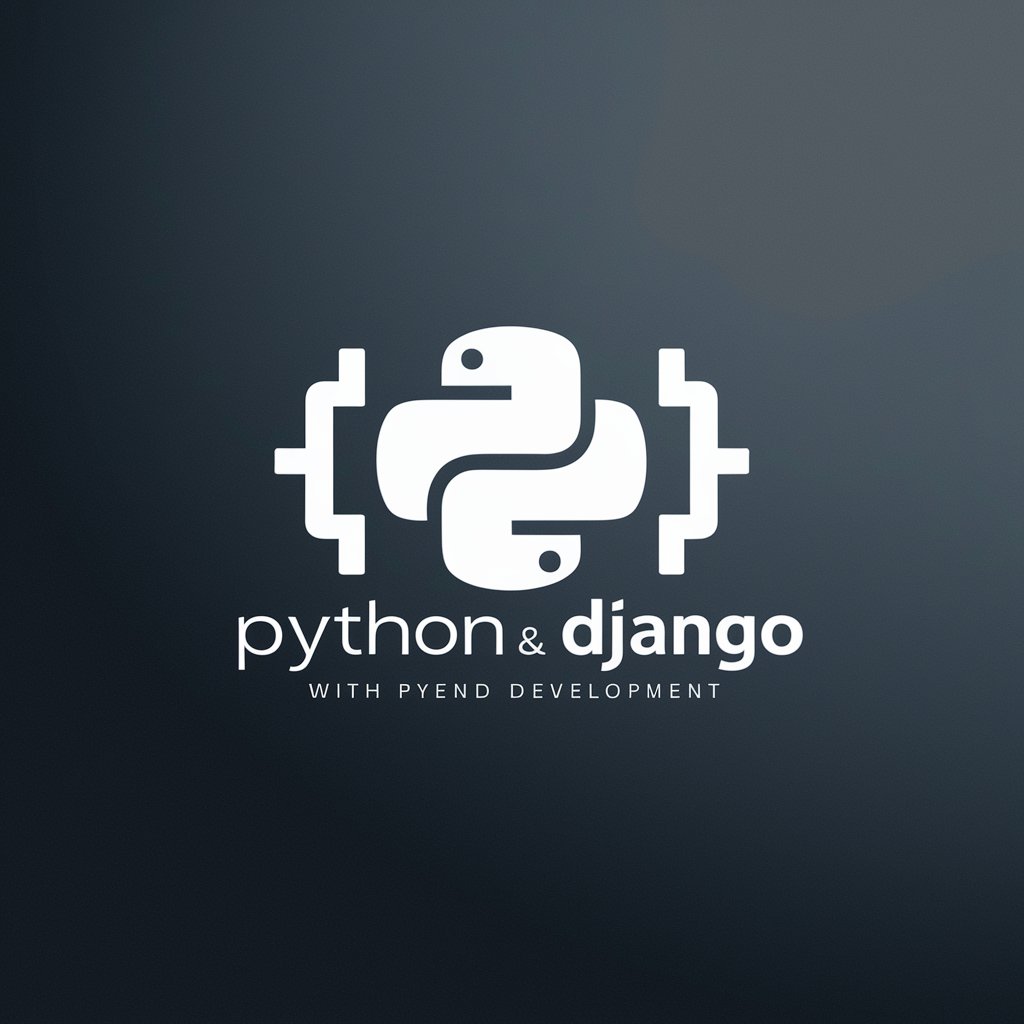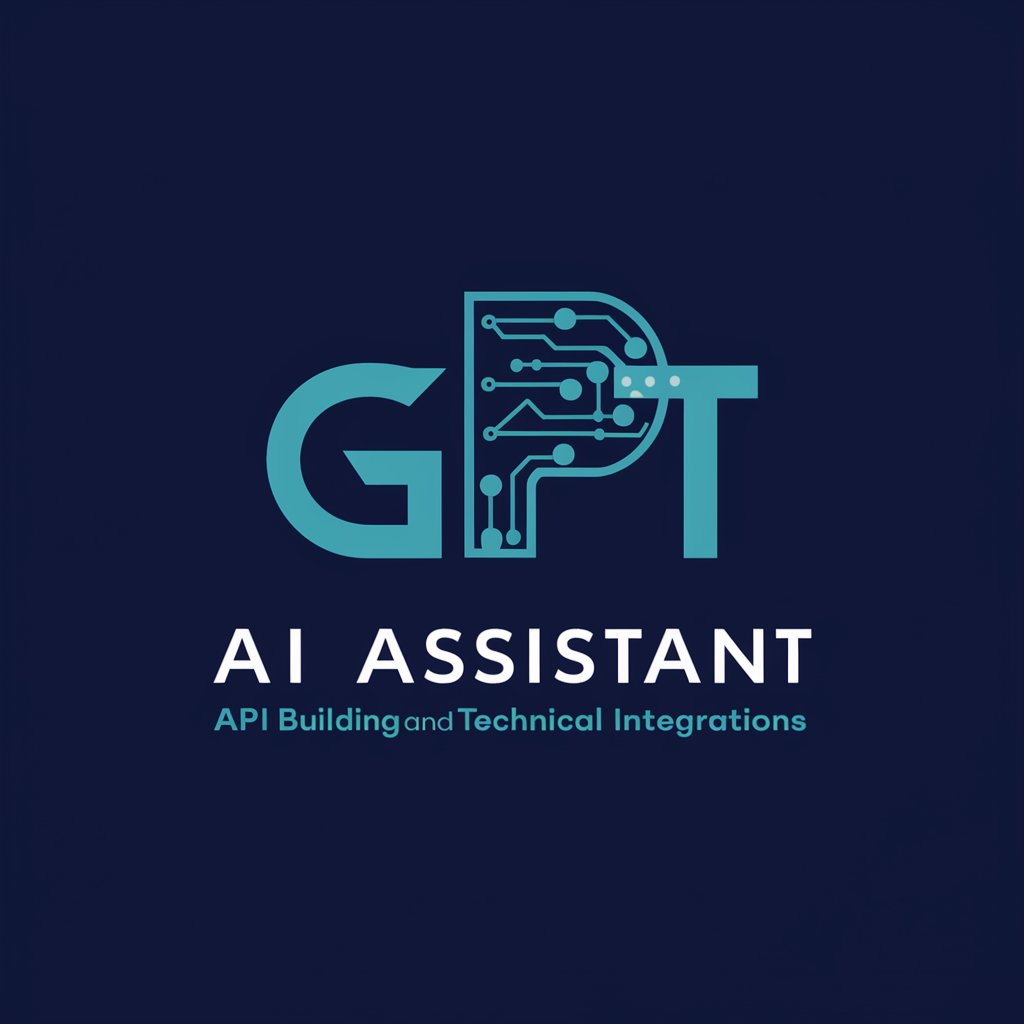
Backend API Python/ Django/ Django REST Framework-backend API development tool
AI-powered backend builder with Django & DRF

Expert in Python, Django, and backend API development
How do I optimize a Django query?
Explain Django's MVT architecture.
Best practices for REST API in Django?
How to handle authentication in Django REST?
Get Embed Code
Introduction to Backend API Development Using Python, Django, and Django REST Framework (DRF)
Key Functions of Python/Django/DRF in Backend API Development
Model and Database Abstraction viaJSON Code Correction Django ORM
Example
A developer defines a 'Product' model for an e-commerce platform with fields like 'name', 'price', and 'stock'. Django automatically creates the corresponding SQL schema and provides a Pythonic interface to query and manipulate these records.
Scenario
A warehouse manager needs to track stock changes. A backend API built with Django can offer endpoints to add, update, and delete product information without manual SQL queries.
Serialization and Data Transformation with DRF
Example
Using `ModelSerializer`, a `UserSerializer` can automatically convert a Django User model into JSON data and vice versa for API consumption.
Scenario
A mobile app needs to show user profiles. The API uses DRF serializers to send only specific user fields (e.g., username, profile picture) securely to the frontend.
Authentication, Permissions, and Throttling
Example
DRF’s `IsAuthenticated` permission class ensures that only logged-in users can access certain endpoints. Token-based or JWT authentication can also be implemented.
Scenario
In a banking app, sensitive endpoints like 'Transfer Funds' must be protected. DRF enforces authentication and limits the number of requests per user to prevent abuse.
Target User Groups for Python/Django/DRF Backend Services
Startups and SMEs (Small and Medium-sized Enterprises)
Django’s batteries-included philosophy accelerates development, making it ideal for startups needing to build MVPs quickly. The built-in admin panel and ORM reduce time-to-market, while DRF enables easy API exposure for web/mobile clients.
Enterprise Developers and API Engineers
Large teams benefit from Django's robust structure and DRF's modularity to build enterprise-grade APIs. Features like custom permissions, throttling policies, and support for complex data serialization make Django + DRF a strong choice for scalable backend architecture in complex systems.
How to Use BackendBackend API Python Guide API with Python, Django, and Django REST Framework
Step 1
Visit aichatonline.org for a free trial without login; no need for ChatGPT Plus to get started with guidance on Python, Django, and DRF development.
Step 2
Set up your environment: Install Python (3.10+ recommended), create a virtual environment, and install Django and djangorestframework using pip. Ensure PostgreSQL or SQLite is configured for local development.
Step 3
Create a Django project and app: Use `django-admin startproject` and `python manage.py startapp`. Define models in `models.py`, run migrations, and register the app in `settings.py`.
Step 4
Build API endpoints: Use Django REST Framework to define serializers for models, create class-based views or viewsets, and map them to URLs using routers for clean RESTful routing.
Step 5
Test and optimize: Use DRF's built-in browsable API for testing, integrate automated testsBackend API Django Guide with pytest or Django's test framework, and optimize queries using `select_related` and `prefetch_related` to reduce DB hits.
Try other advanced and practical GPTs
日本国内旅行アドバイザー
AI-powered travel planner for exploring Japan

Stable Diffusion提示词大师 Pro
AI-powered prompt builder for stunning visuals

PPT总结及演讲稿生成器
AI-powered summaries and speeches from your slides

PPT 优化大师
AI-Powered Tool for Stunning PPTs

教师备课助手
AI-powered teaching assistant for smart lesson planning

中国小说
AI-powered Chinese novel creation engine.

海龟汤游戏
AI-powered logic game for mystery lovers.

Discussion Post Writer
AI-powered tool for effortless academic writing.

Political Science Writer
AI-powered writing assistant for political science.

图片处理大师
AI-Powered Image Creation and Transformation

Discord Server Builder
AI-powered custom Discord server planning.

Air Force Narrative Statement Generator
AI-powered narrative builder for Air Force achievements
- Content Management
- User Auth
- Data APIs
- Mobile Backend
- Admin Panel
Backend API with Python/Django/DRF: Detailed Q&A
How do I secure API endpoints in Django REST Framework?
Use DRF's built-in authentication classes like TokenAuthentication, SessionAuthentication, or JWT (via libraries like djangorestframework-simplejwt). You can restrict access by applying `permission_classes` to views, such as `IsAuthenticated`, `IsAdminUser`, or custom permissions.
What’s the best way to structure a large Django REST project?
Split your project into modular apps, use the 'apps' folder convention, create a `core` app for shared utilities, configure DRF settings centrally in `settings.py`, and apply routers with versioning to your API URLs (e.g., `api/v1/`).
Can I integrate Django REST Framework with frontend frameworks like React or Vue?
Yes, DRF APIs serve JSON responses that work seamlessly with JavaScript frameworks. Use Axios or Fetch in the frontend to make API calls, handle CORS with `django-cors-headers`, and ensure serializers return consistent, clean data.
How does DRF handle serialization and validation?
DRF uses `Serializer` or `ModelSerializer` classes to transform complex model data into JSON and vice versa. You can override `validate_<field>()` methods or `validate()` for custom logic, and use `read_only_fields` or `extra_kwargs` for fine control.
What are viewsets and how are they different from regular views?
ViewSets bundle logic for a set of related views (list, create, retrieve, update, delete) into a single class. When used with DRF routers, they automatically generate routes, reducing boilerplate and keeping your API RESTful.






